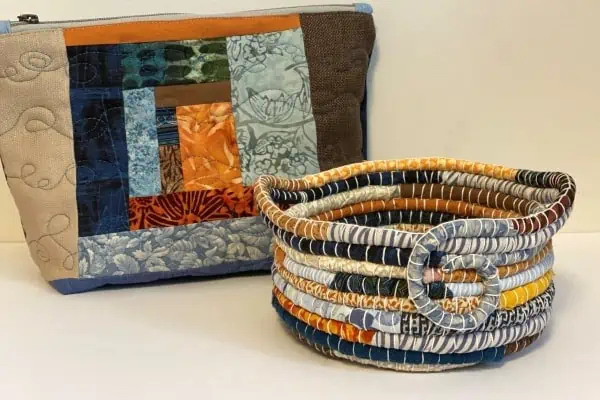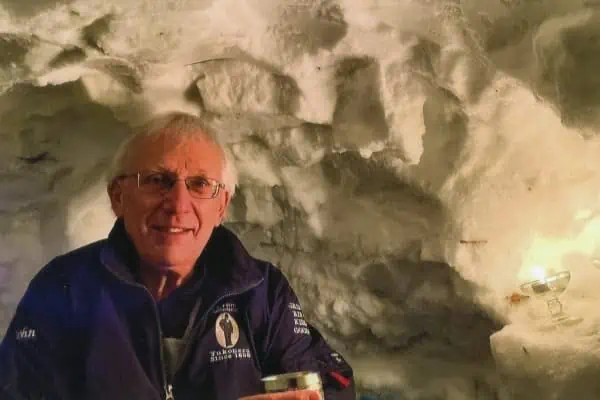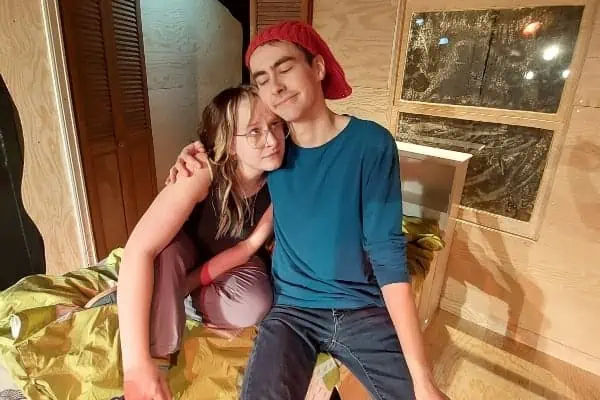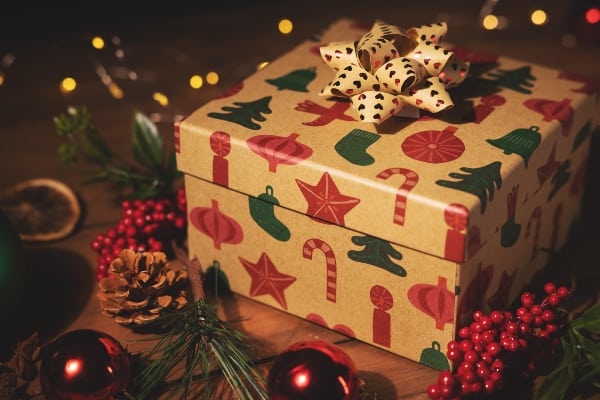Moses found nine other women to take on creating a dog blanket. The sewing group started up again in September, and they cut the materials out in October. She was happy she had such a good team of committed artists working with her. Each blanket takes many hours to design, bead and complete. They worked hard to meet the time frame: to have the blankets ready for the Yukon Quest.
After they decided to make the blankets, Moses brought Yukon Quest on board. Travelling by dogsled is “a part of who we are, where we come from. We should have representation somewhere.” The Yukon Quest was a natural fit.
Yukon Quest organizers loved the idea from the beginning. ”They organized it so that Mandy and Armin Johnson’s team would run as a ‘celebration team,’ starting off twenty minutes before the other dogs, wearing the blankets, but not completing the race. They haven’t had a celebration team since 1999, so it was a return to older ways for the Quest, as well.”
Moses sees this project as incorporating many “little acts toward reconciliation that will make everybody appreciate each other for who they are and what they do.”
Shirley Adamson (Tagish, Tlingit and an Elder of the Tagish Kwaan) has included lines in her design that show the route and checkpoints of the Yukon Quest, its elevation, and the Alaska/Yukon border.
Ann Tayler (Anishinaabe) uses vines, buds and heart forms inside her four-petalled flowers, a design that to Moses’ eye announces an origin east of Winnipeg.
Nyla Klugie-Migwans (Tlicho and Northern Tutchone, member of the Selkirk First Nation and Tlicho Nation of NWT) beads more four-petalled flowers, intertwined ric rac ribbon, and ribbons like those used on ribbon shirts.
Deb Enoch (Northern Tutchone, Upper Tanana and a member of the White River First Nation), uses Yukon Territory crests, fireweed imagery, and three-dimensional flowers. The use of the crest reminds Moses of how many grandmothers supported their families with beading when the Alaska Highway came through; this kind of imagery sold well at that time.
Elizabeth Moses (Tetlit Gwich’in, Northern Tutchone, and member of the First Nation of Na-cho Nyak Dun) beaded orange flowers on red velveteen. Her gold beads form the big dipper pointing to the north star.
Pauline Livingstone (Métis, of the Métis Nation) used big bold flowers that clearly announce her Métis heritage to Moses’ eye.
Velma Olsen (Northern Tutchone, Hän, Gwich’in and a member of the First Nation of Na-cho Nyak Dun) embroidered and beaded onto pink felt to make raised flowers. Diane Olsen (Northern Tutchone, Gwich’in, Han Hwech’in, member of First Nation of Na-cho Nyak Dun) also combines embroidery with beadwork in an innovative way. Karen Lepine (Hän, Inland Tlingit), cut her fringe in two layers, black over white. Her use of colour and melton cloth communicate her Tlingit heritage, as does her dogwood flower pattern.
And finally Florence Moses (Gwich’in, Northern Tutchone, Hän) says you can really see her Gwich’in heritage in her detailed design.
Each artist drew on her personal creativity and heritage to make a widely diverse group of blankets.
You can see these artworks in the lobby of the Kwanlin Dün Cultural Centre at least until the end Mandy of the first week of April. You can also buy calendars with images of the blankets for $20. For every one that is sold, one will be donated to an elder in continuing care, to honour their stories, that inspired this project.




